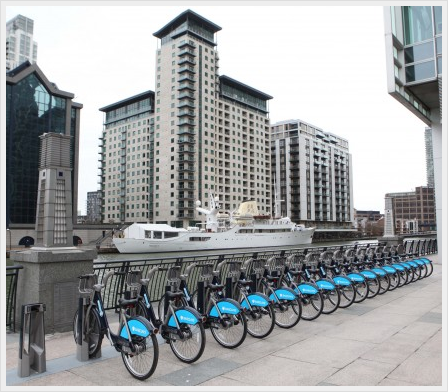
Photo: Transport-for-London.1zpng
Bike-share schemes: what price a healthier city?
22 April 2014
by Richard Forster

Photo: Transport-for-London.1zpng
22 April 2014
by Richard Forster
Bike-share schemes across the world are promoted by cities as valuable mechanisms for reducing congestion, improving people’s health and cutting air pollution, however they are costly systems to run and require significant investment from both the public and private sector. With New York seeking a further US$14 million in funding for their Citi Bike scheme and London about to start their search for a new sponsor to replace Barclays’ £5 million a year support, Nick Michell asks whether bike-share schemes are worth the investment
Bike-share schemes have seen explosive, global growth over recent years. Between 2008 and 2013 the number of bike-share systems more then doubled from 213 operatin...
Unregistered users have limited access to our stories. Register for free now to enjoy Cities Today without restrictions.
Already a subscriber?
| Cookie | Duration | Description |
|---|---|---|
| cookielawinfo-checbox-analytics | 11 months | This cookie is set by GDPR Cookie Consent plugin. The cookie is used to store the user consent for the cookies in the category "Analytics". |
| cookielawinfo-checbox-functional | 11 months | The cookie is set by GDPR cookie consent to record the user consent for the cookies in the category "Functional". |
| cookielawinfo-checbox-others | 11 months | This cookie is set by GDPR Cookie Consent plugin. The cookie is used to store the user consent for the cookies in the category "Other. |
| cookielawinfo-checkbox-necessary | 11 months | This cookie is set by GDPR Cookie Consent plugin. The cookies is used to store the user consent for the cookies in the category "Necessary". |
| cookielawinfo-checkbox-performance | 11 months | This cookie is set by GDPR Cookie Consent plugin. The cookie is used to store the user consent for the cookies in the category "Performance". |
| viewed_cookie_policy | 11 months | The cookie is set by the GDPR Cookie Consent plugin and is used to store whether or not user has consented to the use of cookies. It does not store any personal data. |
You have reached the limit for the basic subscription. Please upgrade to Premium to download more
You have reached the limit for the basic subscription. Please upgrade to Premium to save more

